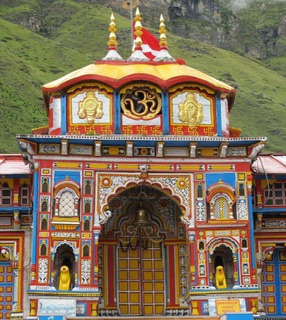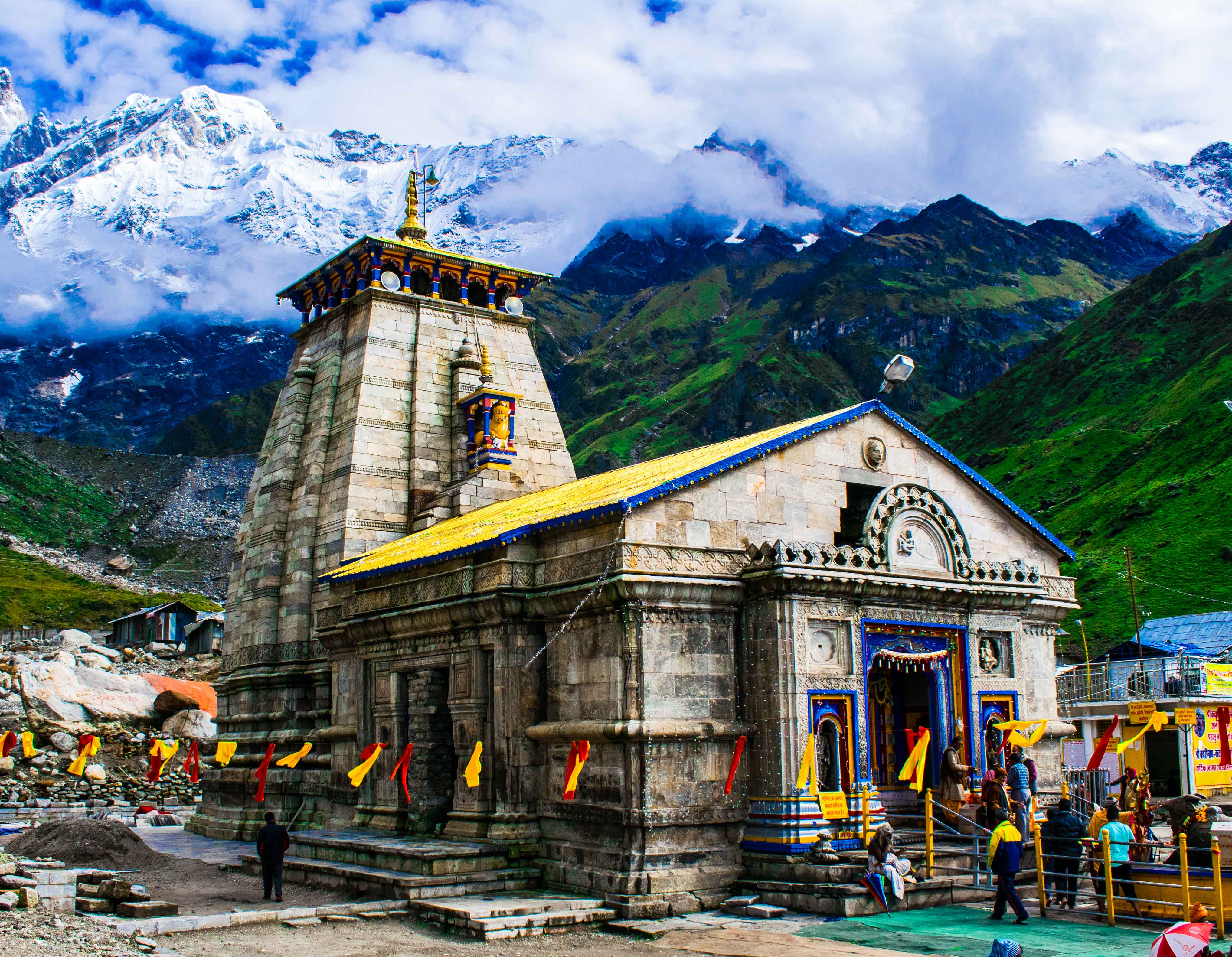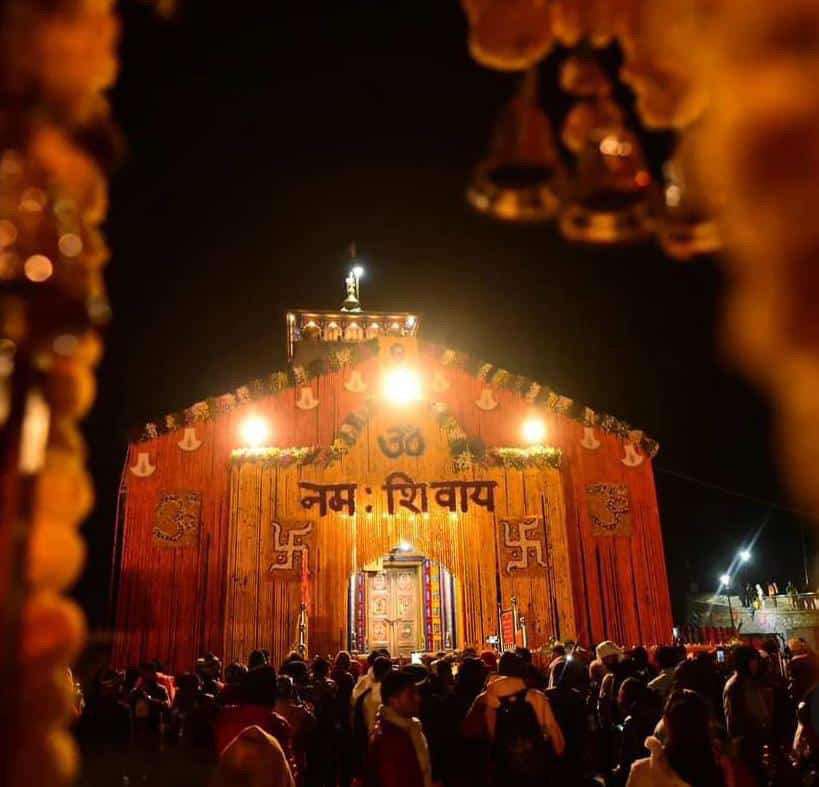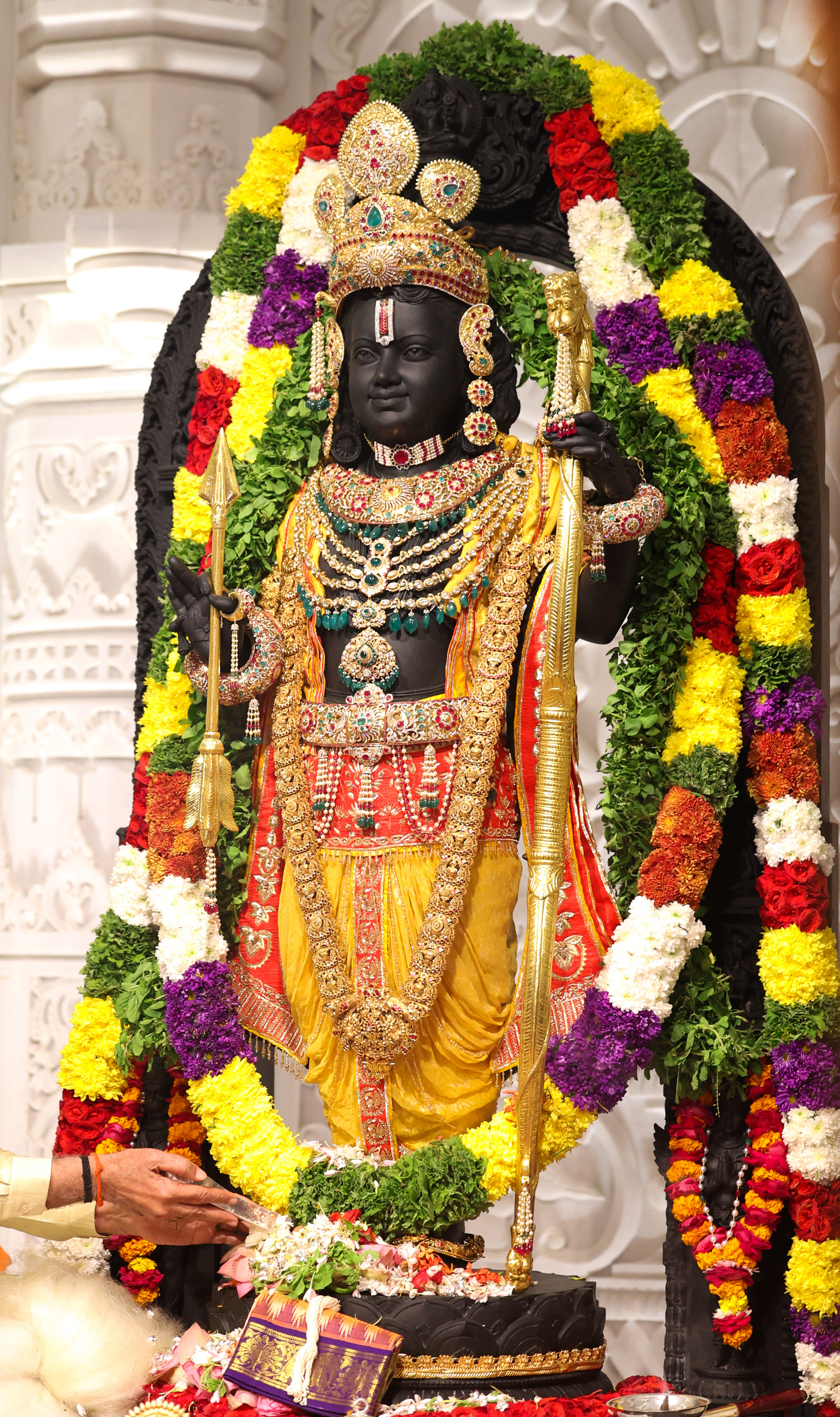Exploring the Mystique and Devotion of Badrinath Temple

Nestled in the majestic Himalayas of Uttarakhand, the Badrinath Temple stands as a symbol of spirituality, devotion, and tranquility. This ancient shrine, dedicated to Lord Vishnu, has captivated pilgrims and travelers alike for centuries. In this article, we delve into the rich history, significance, architecture, and spiritual allure of the revered Badrinath Temple.
A Historical and Spiritual Legacy:
With origins dating back over a thousand years, the Badrinath Temple is steeped in mythological and historical significance. According to Hindu scriptures, this sacred spot was chosen by Adi Shankaracharya to establish one of the four Char Dham pilgrimage sites. It is believed to be the place where Lord Vishnu performed intense meditation under the Badri tree, hence its name.
The historical and spiritual legacy of the Badrinath Temple is a captivating tapestry woven with threads of mythology, history, and devotion. Situated in the Garhwal region of Uttarakhand, India, this temple holds a special place in the hearts of millions of Hindus and seekers of spiritual enlightenment.
Mythological Significance:
The roots of the temple's legacy reach deep into Hindu mythology. It is believed that the temple stands at the spot where Lord Vishnu undertook rigorous meditation, seated beneath the Badri tree. This meditation was a penance to cleanse the world of its sins. As the story goes, Lord Vishnu, in his Nar-Narayan incarnation, meditated here for thousands of years. Impressed by his devotion and dedication, Goddess Lakshmi took the form of a Badri tree to provide him shelter from the harsh elements.
Adi Shankaracharya's Role:
The Badrinath Temple's prominence was further amplified by Adi Shankaracharya, the renowned philosopher and theologian of ancient India. In the 8th century, he established the concept of the Char Dham pilgrimage, identifying four sacred sites that Hindus should visit in their lifetime. Badrinath was one of these sacred sites, symbolizing spiritual awakening and self-realization.
Historical Evolution:
The temple's history is marked by periods of construction, renovation, and restoration. While its exact origins are shrouded in antiquity, it is known that the temple has undergone multiple renovations due to natural disasters and the passage of time. The current structure dates back to the 16th century, built by the Garhwal kings. These successive constructions showcase the enduring devotion of generations who have sought to maintain the sanctity of the temple.
Pilgrimage and Devotion:
For centuries, the Badrinath Temple has attracted pilgrims from every corner of India and beyond. Pilgrims endure arduous journeys through treacherous terrains to reach the temple, a testament to their unwavering faith. The journey itself is often seen as a spiritual quest, where pilgrims face physical challenges that mirror the trials and tribulations of life.
Rituals and Practices:
The temple's rituals and practices add depth to its legacy. The sacred 'abhishek' ceremony, where the deity is bathed and adorned with various offerings, symbolizes purification and devotion. The 'aarti' performed against the backdrop of the majestic Neelkanth Peak invokes a sense of divine connection. These practices have been passed down through generations, fostering a sense of continuity and reverence.
Cultural Influence:
The temple's legacy extends beyond religious boundaries. It is a living testament to the cultural and architectural heritage of the region. The intricate stone carvings, vibrant murals, and distinctive architectural style blend spiritual symbolism with artistic expression.
Architectural Marvel:
The temple's architecture seamlessly blends ancient design with modern structural expertise. The intricate stone carvings, adorned pillars, and striking pagoda-style roof exude a sense of grandeur and artistic finesse. The temple's exterior, made of stone and wood, resonates with the charm of a bygone era while withstanding the test of time and harsh mountain weather.
The Badrinath Temple's architectural marvel is a breathtaking fusion of artistic ingenuity, religious symbolism, and functional design. Its intricate craftsmanship and unique architectural elements make it stand as a testament to the artistic prowess of ancient Indian builders. Let's delve into the various aspects that contribute to the temple's architectural grandeur:
Temple Complex and Layout:
The temple's layout follows a traditional design, with distinct areas for rituals, worship, and sanctum sanctorum. The complex consists of a main entrance, assembly halls, and smaller shrines dedicated to other deities. The primary shrine, housing the idol of Lord Badri Vishal, is positioned in the innermost sanctum, symbolizing the core of spirituality.
Pagoda-style Roof:
One of the most eye-catching features of the Badrinath Temple is its pagoda-style roof. The multi-tiered, curved roof structure is adorned with intricate wooden carvings, adding a sense of verticality and elegance to the temple's overall appearance. This architectural element is a blend of North Indian and Tibetan influences, harmonizing with the surrounding Himalayan landscape.
Stone Carvings and Sculptures:
The exterior walls of the temple are adorned with exquisite stone carvings that depict various mythological tales, deities, and divine symbols. These intricate carvings not only showcase the artistic skills of the craftsmen but also serve as visual narratives that convey spiritual teachings and stories to the devotees.
Intricate Detailing:
Every nook and cranny of the temple is adorned with meticulous detailing. From the ornate pillars to the decorative motifs, the temple exudes a sense of opulence and devotion. The craftsmen have painstakingly etched patterns that reflect the cosmic order, floral designs, and mythological scenes.
Blend of Materials:
The Badrinath Temple seamlessly blends different materials to create a harmonious whole. The use of stone, wood, and metalwork adds depth and texture to the structure. The stone foundation provides stability, while the woodwork infuses warmth and intricacy.
Symbolism in Architecture:
Every architectural element of the temple carries spiritual symbolism. The tower-like shikara represents a pathway to the divine, while the bell-shaped domes symbolize spiritual awakening. The richly carved entrance gates, adorned with guardian deities, emphasize the transition from the secular to the sacred.
Preservation and Restoration:
The temple's architectural splendor has been preserved and restored over centuries. Various renovations and repairs have been carried out to ensure that the temple remains a testimony to its historical and cultural significance.
Modern Amenities and Accessibility:
While maintaining its traditional charm, the temple complex has also integrated modern amenities to cater to the needs of pilgrims and visitors. Accommodations, resting areas, and facilities have been added to enhance the overall pilgrimage experience.
In conclusion, the architectural marvel of the Badrinath Temple is a captivating blend of tradition, artistry, and spirituality. Its design elements and intricate detailing create an atmosphere that is both awe-inspiring and spiritually uplifting. The temple's architecture serves as a conduit between the earthly realm and the divine, inviting pilgrims and travelers to experience a profound connection to something greater than themselves.
Spiritual Journey and Rituals:
The journey to Badrinath Temple is an expedition of faith and devotion. Pilgrims undertake a strenuous trek through breathtaking landscapes, passing through quaint villages, pristine rivers, and towering peaks. The temple's sanctum sanctorum houses the black stone idol of Lord Badri Vishal, an embodiment of Lord Vishnu. The rituals, including 'abhishek' and 'aarti,' are performed with immense devotion and fervor, creating an atmosphere of divine connection.
The spiritual journey to the Badrinath Temple is a profound and transformative experience that encapsulates devotion, self-discovery, and a deep connection to the divine. As pilgrims embark on this sacred odyssey, they traverse not only physical terrain but also embark on a path of inner exploration. The rituals performed along the way infuse the journey with meaning and spirituality. Let's delve into the spiritual journey and rituals that make the Badrinath pilgrimage a unique and life-altering experience:
Physical and Spiritual Journey:
The pilgrimage to Badrinath is more than just a physical trek; it's a pilgrimage of the heart and soul. Pilgrims undertake a challenging expedition through rugged terrains, steep slopes, and unpredictable weather. This arduous journey mirrors the challenges of life and becomes a metaphor for the spiritual seeker's perseverance and determination to overcome obstacles.
A Journey of Self-Reflection:
As pilgrims traverse the Himalayan landscape, they engage in a profound journey of self-reflection. The serene surroundings provide a conducive environment for introspection, where one can detach from the distractions of the world and delve into the depths of their own consciousness.
Encounter with Nature's Majesty:
The journey to Badrinath takes pilgrims through breathtaking vistas of nature's grandeur. Snow-capped peaks, gushing rivers, and lush valleys serve as reminders of the awe-inspiring beauty and power of the universe. This communion with nature instills a sense of humility and reverence, reinforcing the idea of a divine presence that permeates all creation.
Rituals Along the Way:
Throughout the pilgrimage, various rituals are performed that enhance the spiritual experience:
Worship at Confluence Points (Prayag): Pilgrims often halt at the confluence points of sacred rivers like Alaknanda and Mandakini, offering prayers and performing rituals. These confluences hold immense spiritual significance and are believed to be points of divine energy.
Offerings and Devotions: Along the journey, devotees offer prayers, light incense, and chant mantras. These acts of devotion create an atmosphere of reverence and divine connection.
Divine Shelter: Resting places and ashrams provide not only physical respite but also offer opportunities for spiritual discussions and satsangs (spiritual gatherings). These interactions foster a sense of community among pilgrims and allow for the exchange of spiritual insights.
Sacred Dip in Tapt Kund: Upon reaching Badrinath, pilgrims often take a dip in the Tapt Kund, a natural hot spring believed to have healing properties. This purifying act symbolizes the shedding of impurities and the preparation for a sacred encounter with the deity.
Culmination at the Temple:
Reaching the Badrinath Temple is the culmination of the pilgrimage. The moment of standing before the deity's sanctum sanctorum is a deeply emotional and spiritually charged experience. The rituals of 'abhishek' (ceremonial bathing) and 'aarti' (offering of light) are performed with utmost devotion, allowing pilgrims to connect directly with the divine presence.
In conclusion, the spiritual journey to Badrinath Temple is an expedition of the heart, mind, and soul. It's a quest for self-discovery, a communion with nature, and a transformative encounter with the divine. The rituals performed along the way infuse the journey with meaning, deepening the pilgrims' understanding of their own spiritual path and their connection to the universe.
Local Culture and Traditions:
The temple not only serves as a spiritual hub but also reflects the local culture and traditions of the Garhwal region. Pilgrims have the opportunity to interact with the warm-hearted locals, witness traditional folk performances, and savor regional cuisine that adds to the holistic experience.
Modern Amenities and Accessibility:
In recent years, efforts have been made to enhance the pilgrimage experience. Modern amenities, accommodations, and facilities have been established to cater to the needs of the increasing number of devotees and tourists. The construction of a motorable road has also made the temple accessible to a wider audience.
You Might Also Like:
Badrinath Travel Guide: First Time Revealed on Internet
Place to see in Badrinath Dham
Badrinath Dham is not only a sacred pilgrimage site but also a place of natural beauty and cultural significance. Here are some of the notable places to visit within the Badrinath Dham:
- Badrinath Temple: The main attraction, the Badrinath Temple, is dedicated to Lord Badri Vishal (Lord Vishnu). The temple's intricate architecture, including its pagoda-style roof and stone carvings, makes it a must-see for its spiritual and artistic value.
- Tapt Kund: This natural hot spring is believed to have therapeutic properties. Devotees often take a dip in its holy waters before entering the temple as a purifying ritual.
- Brahma Kapal: A flat platform on the bank of the Alaknanda River, Brahma Kapal is where Hindus perform rituals for their departed ancestors. It is believed that performing these rituals here ensures salvation for the souls.
- Narad Kund: A freshwater pool near Tapt Kund, Narad Kund is associated with the sage Narada. Legend has it that he meditated here, and the hot water from Tapt Kund was brought here for his comfort.
- Mana Village: Known as the last village of India, Mana is located near Badrinath. It holds cultural and mythological significance as the abode of the sage Vyas, who is said to have composed the Mahabharata here.
- Vasudhara Falls: A trek from Mana village leads to Vasudhara Falls, a stunning cascade that is said to be a symbol of the divine blessings of Mother Nature.
- Charan Paduka: A rock slab bearing Lord Vishnu's footprint is enshrined here. The trek to Charan Paduka offers breathtaking views of the surrounding mountains and valleys.
- Mata Murti Temple: Dedicated to the mother of Lord Badri Vishal, Mata Murti Temple is located along the Alaknanda River. It's a charming spot to pay homage and enjoy the picturesque surroundings.
- Ganesh Cave: Believed to be the place where Lord Ganesha wrote the Mahabharata as dictated by Sage Vyas, this cave is a symbol of literary importance and devotion.
- Sheshnetra: An enormous boulder with an impression of Lord Vishnu's serpent, Sheshnag, is situated here. It's a site of mythological significance.
- Satopanth Lake: For trekkers and adventure enthusiasts, the trail to Satopanth Lake offers breathtaking views of the surrounding peaks and the glacial lake itself.
- These are just a few of the many places to explore within and around the Badrinath Dham. Each site holds its own significance, whether it's steeped in mythology, natural beauty, or spiritual devotion.
Exploring the Mystique and Devotion of Badrinath Temple:
Embark on a spiritual journey to unravel the profound significance of Badrinath Temple, nestled amidst the enchanting Himalayas. Discover the mystique and devotion that have drawn pilgrims and seekers to this sacred abode for centuries.
Key Insights into the Significance of Badrinath Temple:
- Spiritual Legacy:
Badrinath Temple stands as one of the holiest shrines in Hinduism, revered as one of the Char Dham pilgrimage sites. Its significance lies in its association with Lord Vishnu, the preserver of the universe, and its role in Hindu mythology and traditions.
- Sacred Geography:
Located in the picturesque town of Badrinath in Uttarakhand, India, the temple is situated along the banks of the Alaknanda River, amidst breathtaking landscapes and serene surroundings. Its tranquil setting fosters an atmosphere of introspection and spiritual awakening.
- Pilgrimage Tradition:
Pilgrims from across the globe undertake arduous journeys to pay homage to Lord Badrinath, seeking blessings, redemption, and spiritual enlightenment. The temple's significance transcends geographical boundaries, uniting devotees in a shared pursuit of divine grace.
- Cultural Heritage:
Badrinath Temple serves as a custodian of India's rich cultural and architectural heritage, boasting intricate craftsmanship, vibrant rituals, and age-old traditions. Its historical legacy reflects centuries of devotion and reverence, resonating with visitors from all walks of life.
You Might Also Like: Badrinath Distance Chart: All You Need to Know for Tour
Conclusion:
The Badrinath Temple stands as a testament to the enduring power of faith and spirituality. Its blend of history, architecture, and devotion creates an enchanting aura that draws people from all walks of life. Whether seeking solace in the lap of the Himalayas or exploring the treasures of ancient Indian heritage, a visit to the Badrinath Temple is a transformative journey that resonates deeply with the soul.














